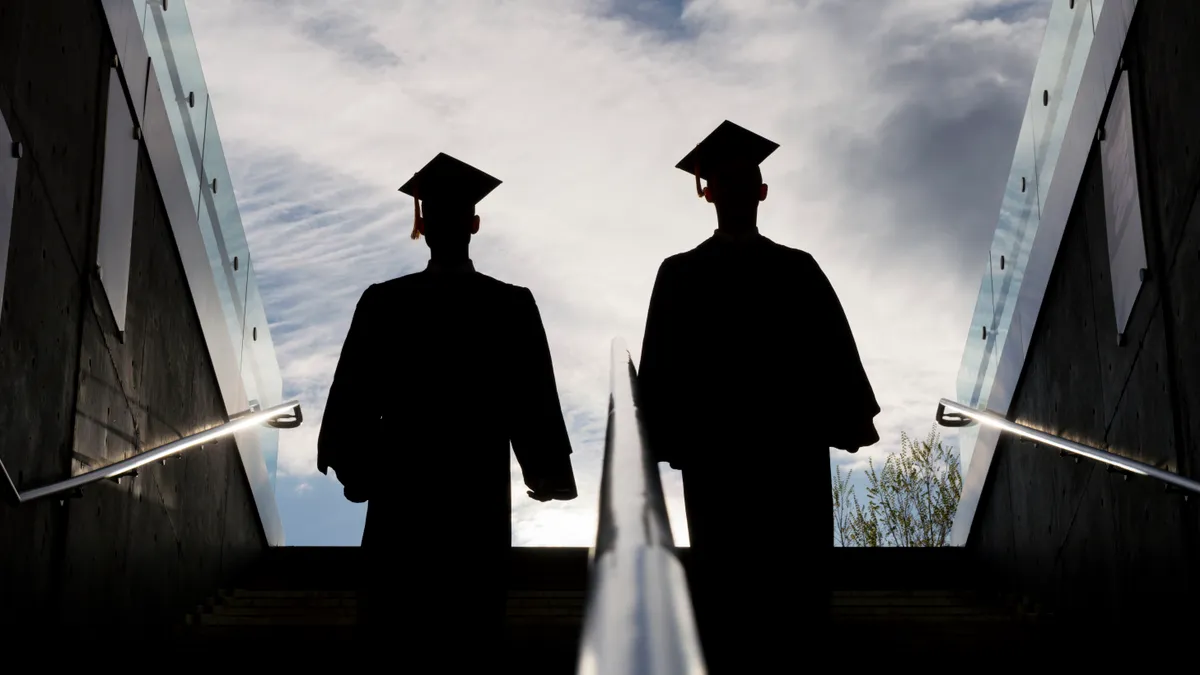Dive Brief:
- Enrollment declines in both schools and colleges call for comprehensive and collaborative actions to investigate the root causes and find solutions to boost attendance and engagement, said speakers during a Thursday session at the National Forum on Education Policy, hosted by Education Commission of the States in Washington, D.C.
- The National Center for Education Statistics reports that K-12 public schools saw a 3% drop in enrollment between fall 2019 and fall 2020. Undergraduate enrollment fell by 4.7%, or by 662,000 students, between spring 2022 and spring 2021, according to the National Student Clearinghouse Research Center.
- Better collaborations are needed between K-12 and higher education systems to provide supports to students, families and school staffs. Also needed to boost preschool through higher education enrollments are strategies for addressing individual barriers to enrollment and engagement, the speakers said.
Dive Insight:
"There's a lot of innovative thinking going on across the country about how to better link the pathways between K-12 and postsecondary, and not all of it is about going to a degree," said Rick Torres, the National Student Clearinghouse's president and CEO.
For example, he said, funding models could support efforts by community colleges to offer more individualized skill-building coursework for a person's specific job in the workplace.
"It is now time to think and act differently and decisively," Torres said.
Torres also emphasized the value of K-12 and higher education systems partnering with state agencies and other stakeholders to support enrollment and engagement.
In Kentucky, efforts are underway to address concerning enrollment declines at the elementary, secondary and postsecondary levels, said speakers Lu Young, chair of the state board of education, and Amanda Ellis, vice president of P-20 policy and programs at the Kentucky Council on Postsecondary Education.
"We want students to know they are worthy of going to a postsecondary institution," Ellis said.
The state saw a five-year K-12 enrollment decline of just over 2.5% from the 2020-21 school year. Meanwhile, birth rates are declining, which "complicates the K-12 enrollment prospects," Young said.
One approach the state is taking to bolster the education pipeline is intentional coordination and collaboration between experts in early education, K-12, higher education and the workforce.
That effort — the Commonwealth Education Continuum — created different workgroups to address specific challenges, such as preparing high school students, particularly those from underrepresented populations, for choosing their postsecondary options.
The continuum also uses data analysis and direct stakeholder feedback to better understand enrollment barriers. "It wasn't 28 of us sitting at a table telling everybody in the state what they needed to do, but it was our citizens telling us what they needed most," Ellis said.
The continuum specifically sought feedback on how to improve the transition from high school to college, Ellis said. That information has led the state to look into improving high-quality early postsecondary opportunities, such as dual enrollment.
Other efforts include improving communication with families about students' postsecondary opportunities, as well as assistance for school counselors through the Kentucky Advising Academy, which is supported by COVID-19 emergency funds.
The state's efforts aren't just focused on academics, but also incorporate trauma-informed care, mental wellness and social and emotional learning, Young said.
"Whatever's going on with the kids or communities or individual families … we are building a place, a pipeline for them from birth to 3 into the school system and then very successfully transitioning them to what the future holds in postsecondary," Young said.














